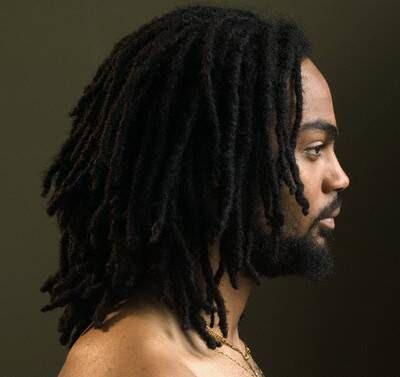
Long and eventful in nature, dreadlocks, alternatively referred to as locks or “locs,” are a culturally significant and distinctive hairstyle. Throughout history, various communities across the globe, spanning from ancient civilizations to contemporary subcultures, have embraced the fashion of wearing coiled or matted locks of hair. This article will guide you through the fascinating history of dreadlocks, delving into their origins, evolution, and cultural significance.
History of Dreadlocks
Origin
Tracing the exact origins of dreadlocks can be challenging due to the fact that this hairstyle has independently emerged in different cultures throughout history. Ancient Egypt is home to one of the earliest known instances of dreadlocks. Archaeologists have unearthed mummies dating back over 3,000 years that possess remarkably well-preserved dreadlocks. This intriguing discovery indicates that the fashion of wearing dreadlocks was popular among both common people and royalty in the Nile Valley.
In India, dreadlocks have a deep-rooted history associated with religious and spiritual practices. These matted locks, known as “jata” or “jaṭā,” are traditionally worn by sadhus, who are Hindu holy men who renounce worldly possessions and embrace a life of asceticism. The jata symbolizes the devotees’ deep devotion to the divine and their intentional detachment from material wealth.
Dreadlocks have been worn for centuries by different ethnic groups in Africa, including the Maasai, Rastafarians, and the Ashanti people of Ghana. The Rastafarian movement, which originated in Jamaica during the 1930s, had a significant impact on the widespread recognition of dreadlocks as a symbol representing resistance and spiritual expression.
Cultural Significance
Throughout history, dreadlocks have held various cultural and spiritual significance. Many African cultures symbolize strength, spirituality, and a deep connection to one’s ancestors. The process of creating and maintaining dreadlocks is a complex one that often involves a sense of community and spirituality. This practice serves to strengthen the connections between individuals and their communities.
Dreadlocks hold significant meaning within the Rastafarian community as they symbolize a deep faith and unwavering dedication to the teachings of Haile Selassie, the former Emperor of Ethiopia. Rastafarians firmly believe that Haile Selassie is the Messiah. Rastafarianism advocates for unity, equality, and social justice, with dreadlocks serving as a visible and unapologetic manifestation of these principles.
The Indian tradition of jaṭā holds deep spiritual and ascetic significance. Sadhus wear matted locks as a symbolic representation of their detachment from the material world and their unwavering commitment to the spiritual path. Dreadlocks are often regarded as a symbol of ascetic purity and a profound spiritual connection.
Evolution
Dreadlocks have undergone significant evolution throughout history. The symbol of spiritual devotion has transformed in many instances into a fashion statement, a means of self-expression, or a method of challenging societal norms. The evolution of dreadlocks has resulted in their widespread acceptance and integration into mainstream culture, surpassing cultural and ethnic boundaries.
The global popularization of dreadlocks occurred during the 1970s, primarily due to the increasing popularity of reggae music. This trend was greatly influenced by iconic musicians such as Bob Marley. Their music and advocacy for social justice have played a significant role in establishing dreadlocks as a symbol of resistance and empowerment.
Dreadlocks have gained acceptance among individuals of diverse ethnic backgrounds in recent years, serving as a means of self-expression. Dreadlocks are worn by many individuals for their distinctive aesthetic appeal or as a means of reconnecting with their cultural heritage.
Contemporary Issues
Although dreadlocks are becoming increasingly accepted, there are still challenges that persist. Workplace discrimination against individuals with dreadlocks continues to be a problem in certain regions, which highlights the presence of biases and stereotypes linked to this particular hairstyle. The ongoing struggle for acceptance of different cultures and hairstyles persists, with individuals tirelessly advocating for equal rights and respect.
Frequently Asked Questions About the History of Dreadlocks
What is the history of dreadlocks?
Dreadlocks have a rich history, with origins dating back to ancient Egypt, India, and various African cultures. They have been associated with spirituality, resistance, and cultural identity.
How are dreadlocks created?
Dreadlocks are typically formed by allowing hair to naturally mat and coil over time. However, they can also be created using various techniques, such as backcombing, twisting, or the use of wax or gel.
Are dreadlocks only associated with specific cultures?
No, dreadlocks have transcended cultural boundaries and are now worn by people from various backgrounds as a form of self-expression and fashion.
What is the significance of dreadlocks in Rastafarianism?
In Rastafarianism, dreadlocks symbolize a commitment to the faith and the teachings of Haile Selassie. They represent unity, equality, and a connection to the divine.
Are there challenges associated with wearing dreadlocks today?
Yes, some individuals face workplace discrimination and biases due to their dreadlocks. Advocates continue to fight for acceptance and equal rights for those who wear them.
Conclusion
Dreadlocks have a rich and complex history, deeply intertwined with spirituality, culture, and resistance. From their origins in ancient Egypt and India to their prominent place in Rastafarianism and African traditions, these distinctive locks have evolved and transformed over the centuries. While the modern world has embraced dreadlocks as a symbol of self-expression and individuality, the fight for acceptance and equality for those who wear them continues. Understanding the history and cultural significance of dreadlocks is essential for appreciating their enduring beauty and significance in today’s diverse and interconnected world.

Leave a Reply